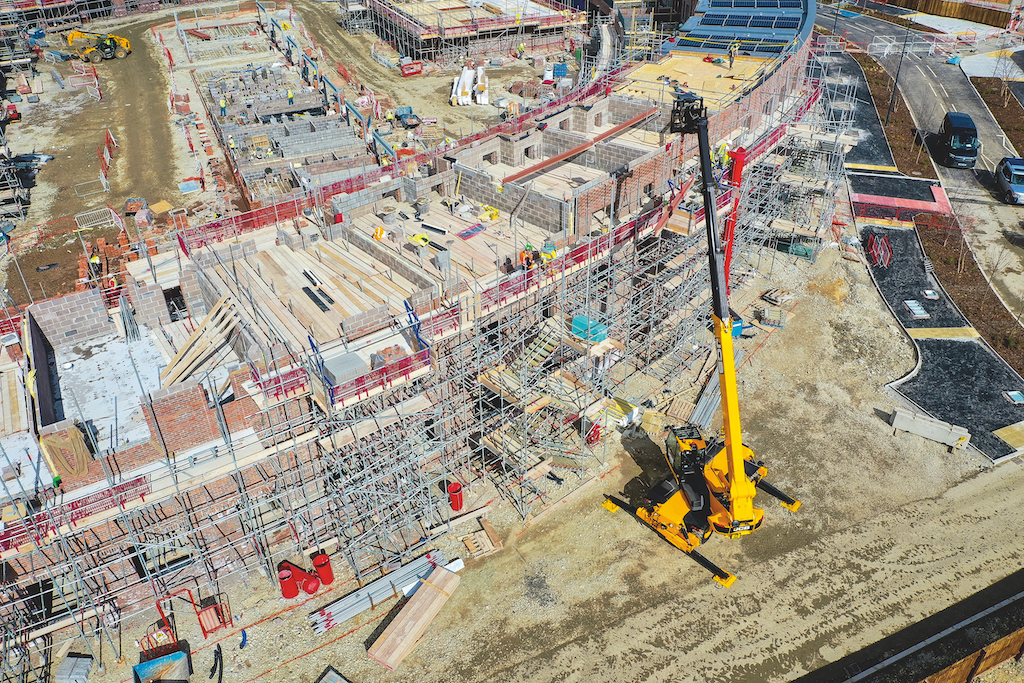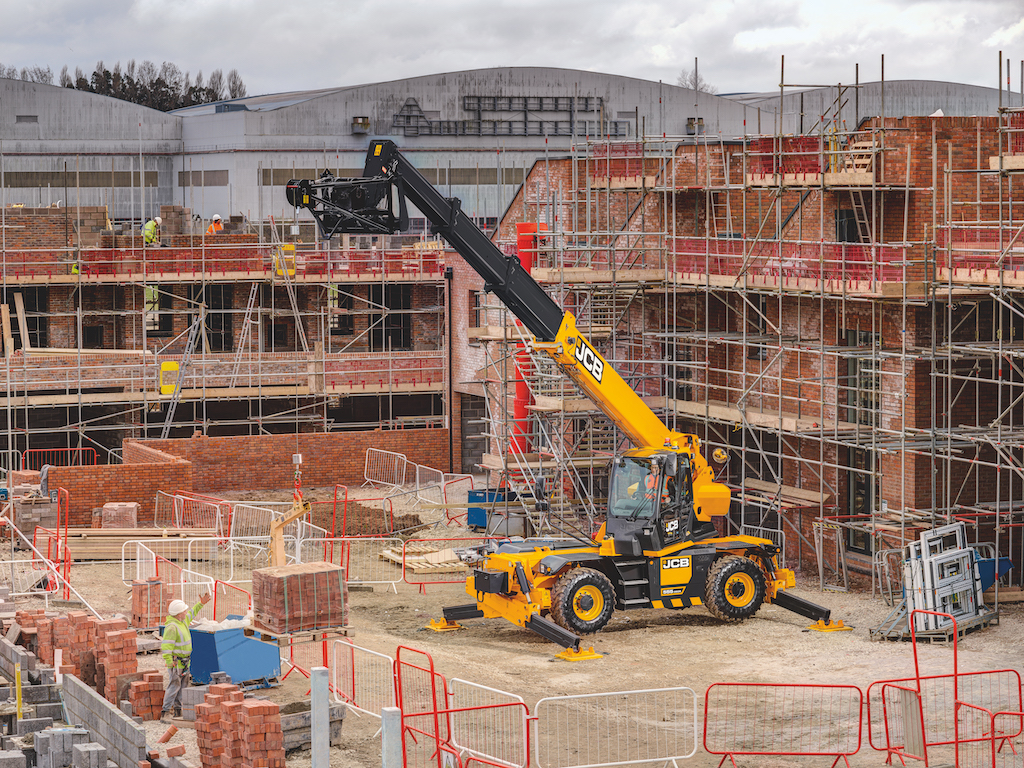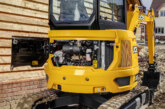JCB is reaching new heights in telescopic handlers with an extension to its rotating range.
Significant challenges around materials availability and skilled worker shortages notwithstanding, the housing sector is currently booming. It is a need which is indeed pressing because the market has been languishing in a crisis of affordability for too long, with an imbalance between supply and demand driving up prices, and making the idea of owning a property an unrealistic proposition for far too many people.
The government’s has recognised the urgency and set a target of 300,000 new homes to be built every year by the mid-2020s and, although completions are moving in the right direction, the current figures are falling well short, with only 220,000 homes delivered in 2020.
It is this reality which has precipitated a re-evaluation of how new homes are delivered on the ground. MMC (Modern Methods of Construction) – a term which encompasses a range of off-site, near site, and on-site pre-manufacturing solutions – is far from new but, after years of talk and little action, it is a concept which is now steadily gaining converts. The promise of a quicker and lower cost solution to housebuilding at a time when it is urgently needed has brought on board the likes of Barratt Developments PLC – the company behind Barratt Homes – who recently announced that it is increasing MMC to 30 per cent of its housing completions by 2025, citing time-savings as a key driver. There are, in fact, any number of benefits to contractor and developer alike, including a reduction in build schedules, enhanced quality with fewer defects, cuts in energy usage, less waste and safer on site practices, all of which means that even the relatively conservative UK construction sector it’s now taking notice.
It is, however, still the case that only 15,000 of those aforementioned 220,000 homes were built using factory or off-site production processes, or just 7 per cent of the total. Having said that, globally, the MMC market is expected to grow from $17 billion in 2020 to $28 billion in 2025 and this presents the construction equipment industry with some challenges.
“Rather than ‘how many’ we need to think about ‘how’,” declares JCB’s Chief Innovation and Growth Officer, Tim Burnhope, “because the equipment required to erect housing using MMC can be very different. Our 13-tonne X-Series excavator, the 131X, is just what you need for the initial groundworks, but to get the panels and other prefabricated components in place, you will need outstanding reach, lifting capability, manoeuvrability and versatility. That’s where a new 26m rotating telescopic handler – the JCB 555-260R – comes into its own.”
The machine joins the existing 21m 555-210R in what can now be classed as a growing rotating range and represents a 3 in 1 concept that combines telehandler capabilities with that of a crane and an aerial work platform, all in one package.
With urbanisation making jobsites ever more compact and congested, a machine that can lift, move, place and position loads quickly and safely is a valuable addition to any fleet. The new 555-260R has a maximum lift capacity of 5.5tonnes – with 2,000kg at full height, or 300kg at the full reach of 21.4m – and it can pick, lift and place materials, panels and modular components even on the tightest of sites. At the driver’s seat the easy-to-use load management system is at eye-level. From here the operator can adopt one of a range of specially developed attachments incorporating RFID (Radio Frequency Identification), ensuring that the correct load chart is always selected for the correct tool. Unlike a mobile crane the machine can be quickly set up on site, with outriggers that can be deployed stored and levelled at the touch of a button. Excellent all-round visibility can be supplemented by camera kits, including a boom camera for precise placement at height.
In addition, the lower chassis engine layout means ground level access to the engine bay via the large side doors is straightforward – as are daily service checks. JCB’s highly efficient Stage V 448 DieselMax engine, delivering 112kW or 150hp, provides the power, and the machine benefits from competitive lift end cycle times, with high flow auxiliary hydraulics, ensuring efficient winch work. The unit can, in fact, be used with a wide range of winches and jibs, as well as with standard pallet forks, 360 degree rotating forks, and a 5.5 tonne hook, all with remote control lift end capability. Moreover, parts compatibility with other Loadall models will streamline fleet management, and servicing, whilst there’s added safety and security of the JCB LiveLink telematics system, providing a range of data on driver behaviour machine performance and asset tracking, and a Thatcham approved immobiliser installed.
The 555-260R Rotating Telescopic handler has seen 25,000 man hours in its development, and over 5,000 machine test hours, as well as ROPS, FOPS, structural, and hot and cold climate testing, climatic chambers, and thousands of hours of customer evaluation. It’s not just in housebuilding where it will find a place, of course, because its versatility credentials are just as vital in many infrastructure or commercial schemes, as well as urban maintenance.
Although it’s not here yet, there will be a time when the rotating telescopic telehandler is an essential feature of the UK building site, where it’s flexibility and manoeuvrability has become indispensable. Already enjoying a dominant position in the telehandler sector through the Loadall, JCB is well placed to service that need, with more rotating models sure to emerge in the future.












